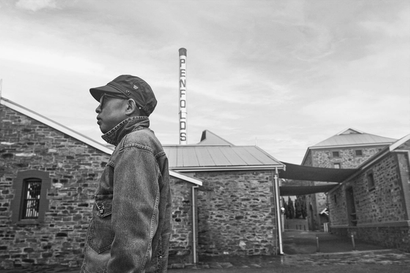London’s best special-occasion restaurants
When a blowout dinner takes a man’s fancy, which is the table to reserve when the moment calls?
Many of the movements that have come to form the current restaurant landscape in the western hemisphere largely involve back-to-basics, family-style sharing dishes; burgers given haute-cuisine do ups (Potato buns! Beef garum! Sit-down service! Silverware!); puzzling chalkboard menus of barely translatable Euro-influenced small plates (if you haven’t quite yet assembled the courage to ask the server if it’s the fregola or the brandade that should pique your interest, you may be doing it wrong); and what is often marketed as democratic service, which is to say no-reservations bare-brick restaurants that have queues of pining diners coiling from its entryway to the surrounding side streets.
But, if a blowout occasion – Valentine's Day; marking a promotion; because you and your Amex can – takes a man’s fancy, which is the table to reserve when the moment calls? Here’s our selection…
Sollip
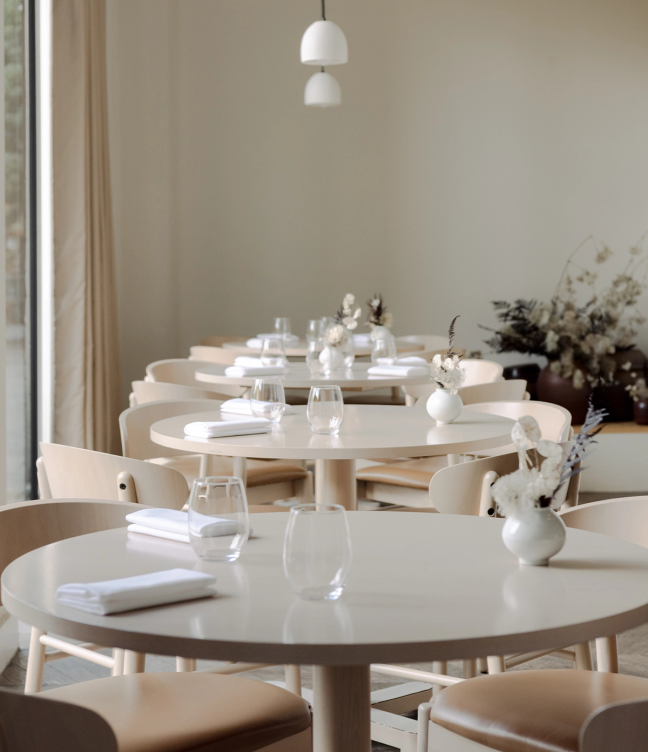
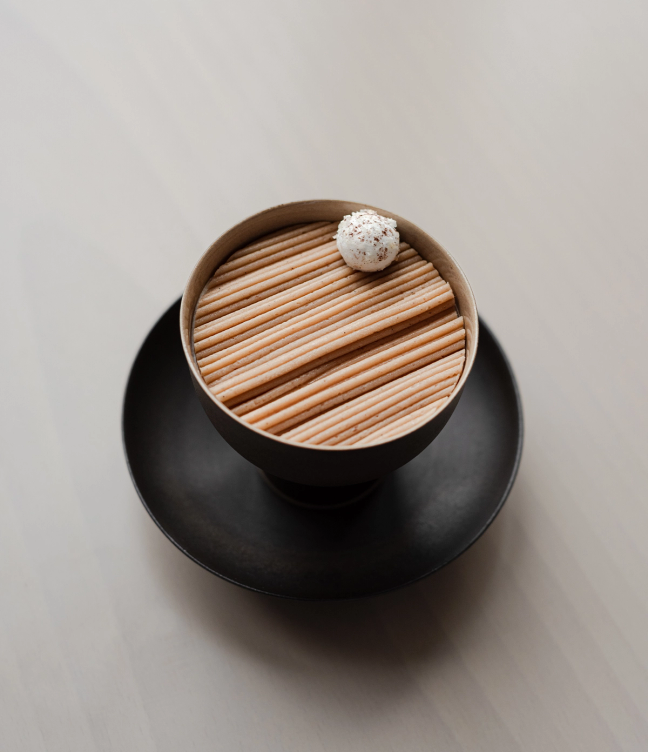
The key thing you should really know before visiting Sollip – the new-wave Korean operated by Bomee Ki and Woongchul Park – is that you won’t be served any classics from umma’s or halmoni’s playbook. There will be no tangs, no rolls of playful kimbap, and, as far as I’ve seen, there’s no miyeokguk, the celebratory soup consumed on birthdays. There are no clear tropes from Escoffier, Bocuse or Troisgros, either (both Sollip chefs are alumni of Le Cordon Bleu).
The result, rather, is an elegant mix of Ki and Park’s time spent in French kitchens, both in London and Korea, with dishes exhibiting a sort of precise, clean vision that is expected from a restaurant with blondewood furniture, white-washed walls, a close proximity to one of the country’s great markets, and a £135 tasting menu. Goose skirt sourced from Highland Wagyu is paired with the house-made gochujang that’s been aged for several years, mixed with some cured daikon, pressed flat, and then three-quarters overlaid with a suave truffle cream. A daikon tarte tatin, which layers the root vegetable with toasted-barley glaze and comes with a cream of roasted potato and burnt hay, splits the difference between Pierre Hermé and the beautiful products that have come from Korean farming. Nurungji broth with mung bean and celeriac has a toasted whisper that progresses into vividness. The unhurried, calm dining room mirrors the restrained dishes. And with the Mont Blanc made with chestnut, tonka Chantilly and pine nuts – a precise, almost abstract plating that, in some ways, looks like a mini bamboo matt – you can’t help but admire the duo at the pass.
Toklas
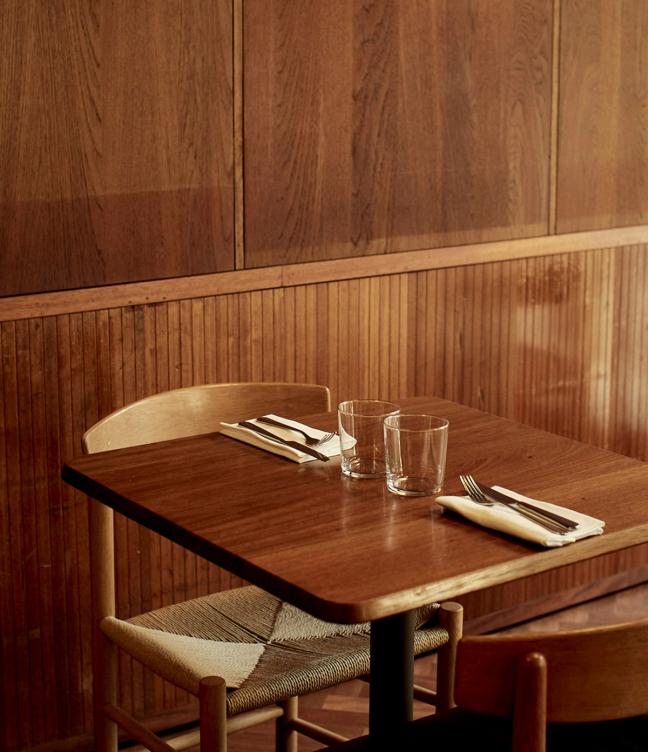
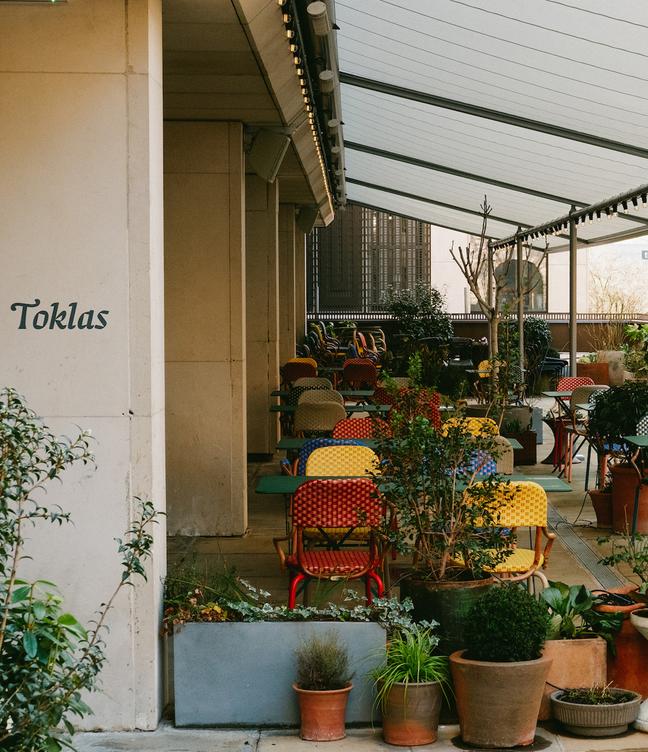
Small plates – artful dishes that capture the nuances of the seasons – are primary objects of lust in London, where the once unwavering desire for the precision-engineered kitchens of Ramsay and Pierre White has swung wildly towards a weakness for easy-feeling cooking that harmonises with chefly ambition, first-rate ingredients and a lineup of courses that changes as often as Liz Truss’s cabinet changed its mind.
Toklas, opened by the founders behind Frieze art magazine and fair, and hewn from the side of a 1970s brutalist building off the Strand, is perhaps setting the pace when it comes to showcasing the fresh, simple flavours of the moment: vegetables and meats close to their ideal form; rabbit saltimbocca with braised chard and lemon; slow-grilled leeks streaked with feta and thyme; Dover sole off the bone; and a pistachio-and-strawberry tart that will make you wish the call of the colder months will never come. The menu is different to last week; and it won’t be the same come Monday.
The look of the space is appropriately handsome, given the ownership – the parquet flooring, the iroko tops and the Wolfgang Tillmans photograph of a jumble of tomatoes are the types of things regular readers of The Modern House skip a heartbeat for – and, like many of the best restaurants on the scene now, the menu leans towards the unfussy lightness of the Mediterranean: wild turbot with zucchini trifolati and Amalfi lemon; Vesuvio tomatoes with borlotti beans, onion and marjoram; squid with piattoni beans and anchovy, with a splash of citrus. Outside, however, on the sort of garden terrace that has the breeziness of a well-worn-in shirt, when you’re sat back and content and with a full earshot of the traffic on Waterloo Bridge and a view of the corpse of the old Strand Tube station, you’ll know this to be a place as dedicated to syncing you into the rhythms of London as St. John is to the stench glories of offal. If you happen to be there during the early hours of the day, you’ll inhale the fragrance of the wonderful bread and patisserie that are pumped out the bakery below.
Restaurant 1890 by Gordon Ramsay
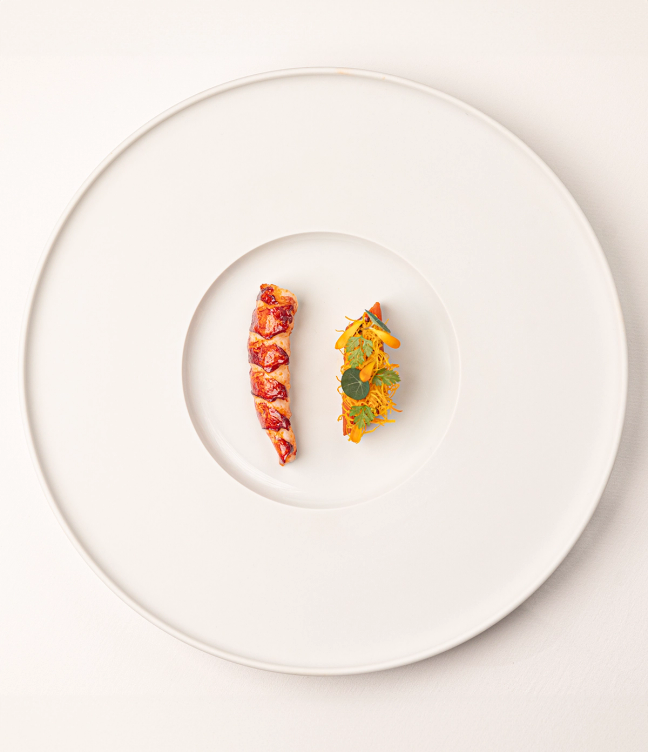
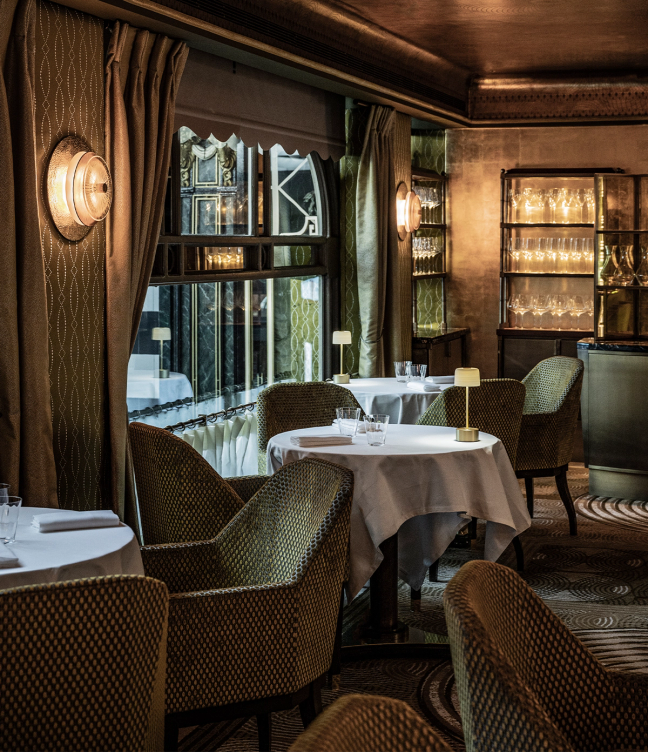
At Restaurant 1890 by Gordon Ramsay, one of the more luxurious and most perpetually booked pieces in the thunderous chef’s jigsaw puzzle of a restaurant operation, you might be able to sample explosive black-truffle bombs, minuscule lobster cornettos, crispy frog leg bonbons with a mayonnaise made of lovage, cod in the Grenobloise style and a little heap of caviar, soft slivers of scallop, and a pretty flawless glass of grenache blanc – the type of serious menu listings you’d associate with high-level European restaurants that put their Escoffier knowledge to work in the evenings. The celeriac royale is plated with some chopped-up hazelnut, thin twigs of Ibérico ham and shoots of thyme, and is swooped up with a shapely, glossy Parker house roll laced with some black pepper. And the Windsor Park venison is an awfully good, Stabilo-sized cut of meat, perfect in both its dark-scarlet appearance and well-nurtured taste and is great with the tiny flow of Pontack sauce. You may throw out your new-year fitness resolutions when the fragola melba is brought into view.
The Connaught Grill
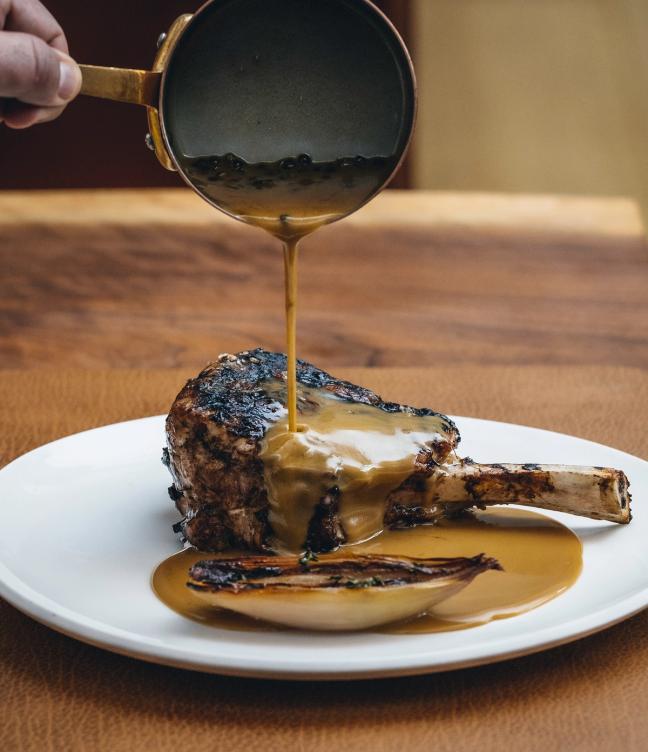
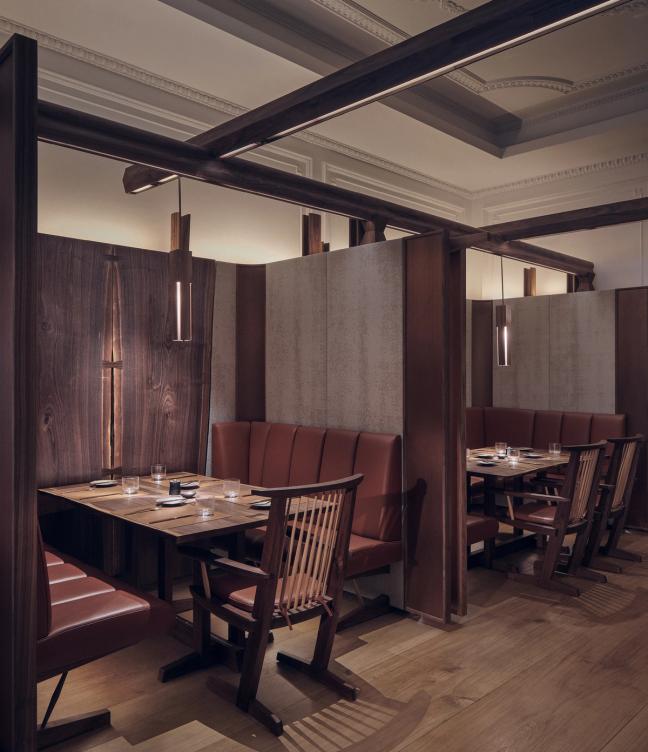
The Connaught hotel is the type of place in which you can spend a long stretch of the week and want for nothing. Big-ticket names Jean-Georges Vongerichten and Hélène Darroze have fed the five-star crowd here for quite some time – the former with his dishes that blend Britain with Southeast Asia, the latter with her elegant multi-course menus – and the Connaught Bar has been a pretty permanent fixture on world’s-best lists ever since its martini trolley was first wheeled out. Scrub off the week at the subterranean spa, and spend the evening being cosseted in any one of the pampering rooms upstairs. Primal instincts are well catered to in The Connaught Grill, where the refined interiorwork – from the rosewood-clad corridor to Mira Nakashima’s custom-made wooden fixtures – creates a clean cocoon that underlines all that you’ve come here to sample: first-rate produce roasted over wood fire.
For the regulars, you’ll always find Dover sole, grilled wild prawns and faultless A5 Kobe. On Sundays, there’s Hereford beef rib and black-leg chicken. When it’s the season, the kitchen may prepare some stuffed rabbit saddle with smoked salsify velouté and nettle purée. For those after traditional grill house failsafes, there’s a T-bone, weighing 900g, grass-fed, and dry-aged for 30 days, resulting in a beastly hunk of properly pinked-out meat. Ask for a booth at the far end of the room, where the humungous headboards will disguise your hour or two of meat-intensive overindulgence.
The Pearly Queen
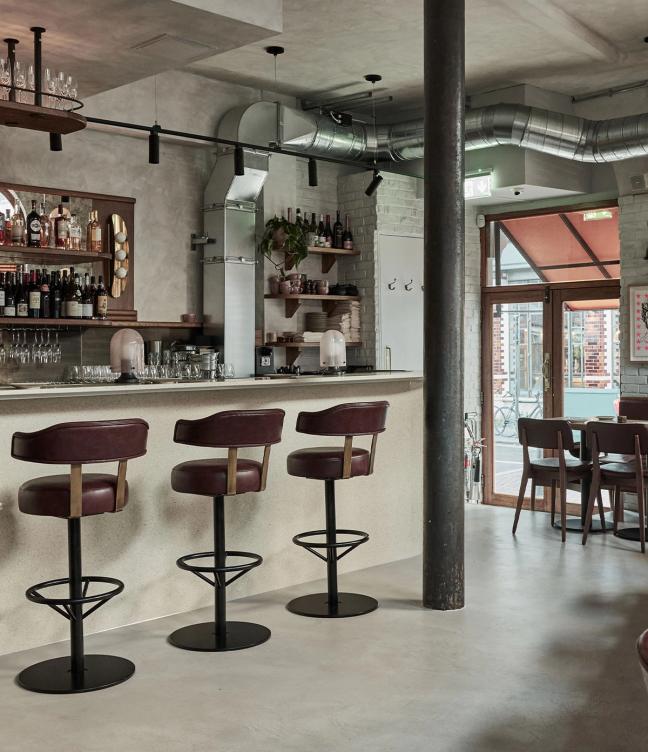
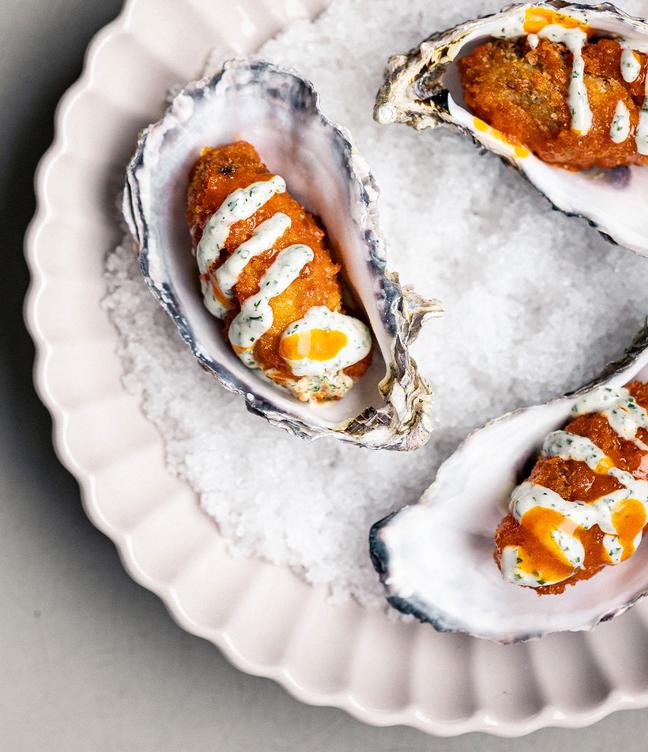
At this stage in dining history, it is simply accepted that oysters are nature’s perfect food, whether your preferences bend towards the melony sweetness of West Coast varietals, the briny zips of those shucked on the Atlantic, Carlingford’s splash of fresh water in each shell, or the creaminess in every shot of the Gillardeau. Cover the mollusc in a tea towel, pop it open with a heavy-duty blade, spoon a little bit of mignonette, a squeeze of lemon or a few drips of Tabasco over the juicy, cool flesh – and the result will always be the same: a splendid gush of ocean into the mouth, a little chew, and the best bite of food you’ll likely have all season.
Tom Brown, a muscular, brawny chef who does muscular, brawny things to seafood, fires the oyster out of a cannon gun much to the purists’ vexation, and even though he often specialises in big, bold showstoppers – the arancini-like fritter smashes together crab, a few cracks of black pepper, and a blizzard of Parmesan; and you’ve no doubt already seen the layered cuttlefish lasagna all over your Instagram feed – it’s his Buffalo-influenced customisation of the oyster that will be your next obsession, a fantasy creation that fuses the meat with panko breadcrumbs, ranch dressing and a hot sauce of clarified butter and Sriracha.
The Guinea
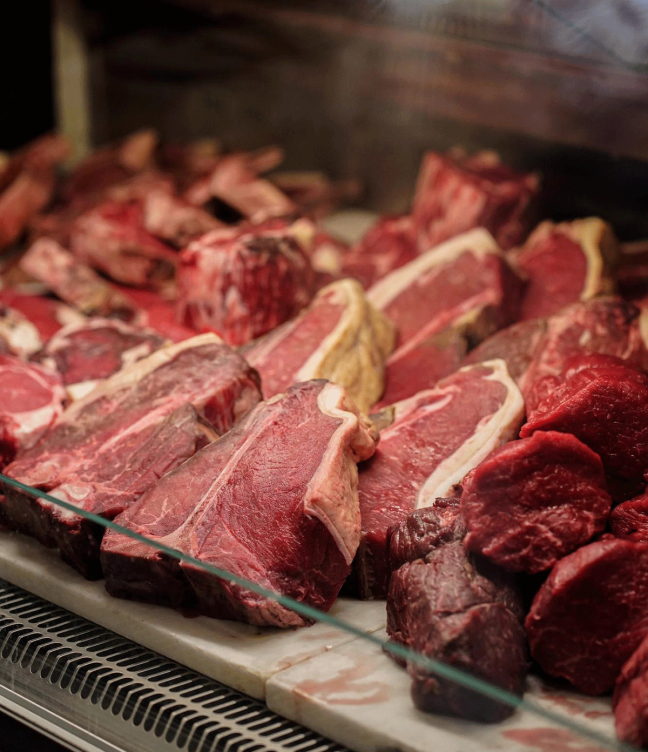
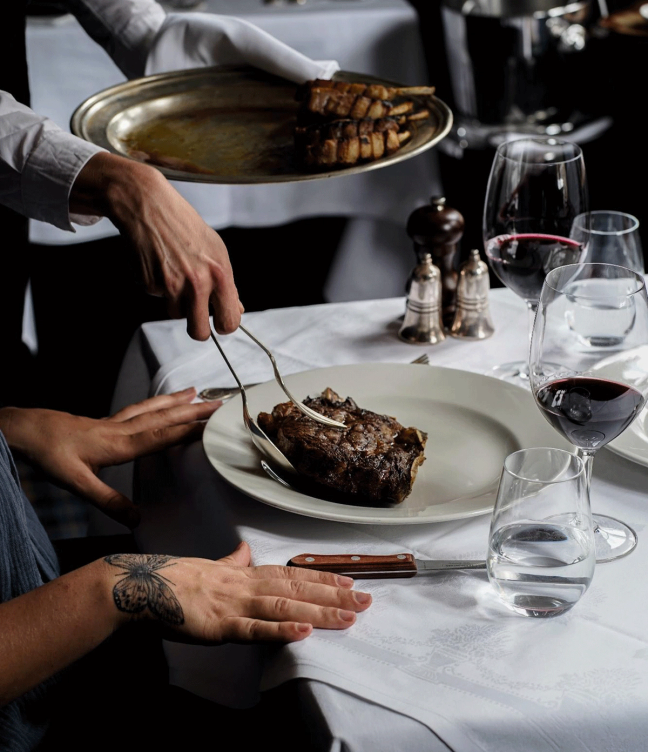
Great meat and a heritage pub setting – you’re going to have a pretty good time at The Guinea. You’ll arrive at the Mayfair legend, and you’ll walk past the butcher-style counter that’s packed densely with the cuts of the day – chateaubriands by the bushel; behemoth côte de boeufs, the rib of which Shohei Ohtani could likely use for an inning or two; sirloins that are streaked with streams of fat – and you’ll plant yourself at the table. You’ll observe the wooden dining room, the walls coated in oils and period artwork, the carpentry bringing to mind the type you’d find in a hunting lodge, the lampshaded light feeling as though you’ve been beamed into a century gone. And you’ll no doubt jump for the porterhouse, a hulking dinosaur of a steak, one whose central bone is flanked by a fillet and a sirloin, the meat of both screaming with scarlet meat and juice. The seared scallops with a bit of grapefruit butter and beurre blanc does a fine job to steady the stomach for the task ahead, and the few stalks of asparagus with a duck egg and a healthy glaze of Hollandaise convinces the guilty that they’re erring on the side of healthy, and the banana sticky toffee pudding will likely send you into submission after it all – but it’s truly difficult not to centre your evening around the pure avalanche of meat.
Dovetale
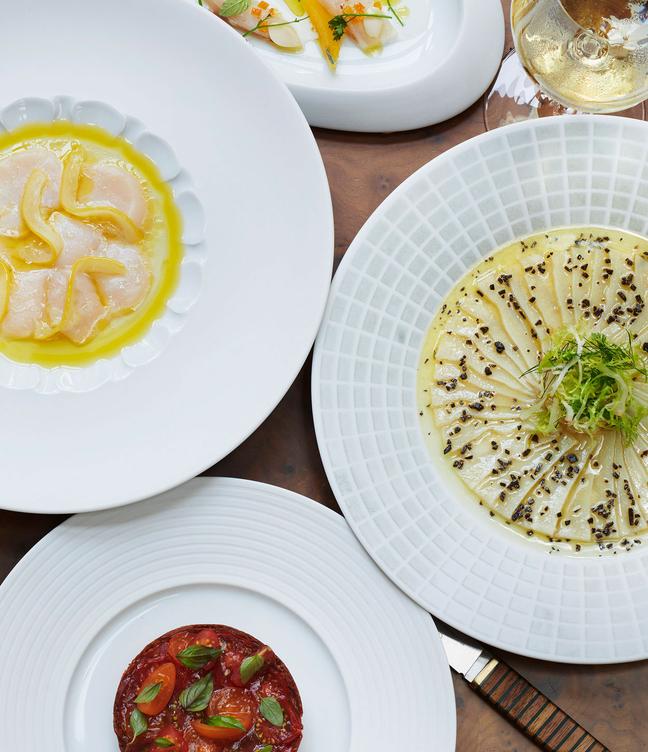
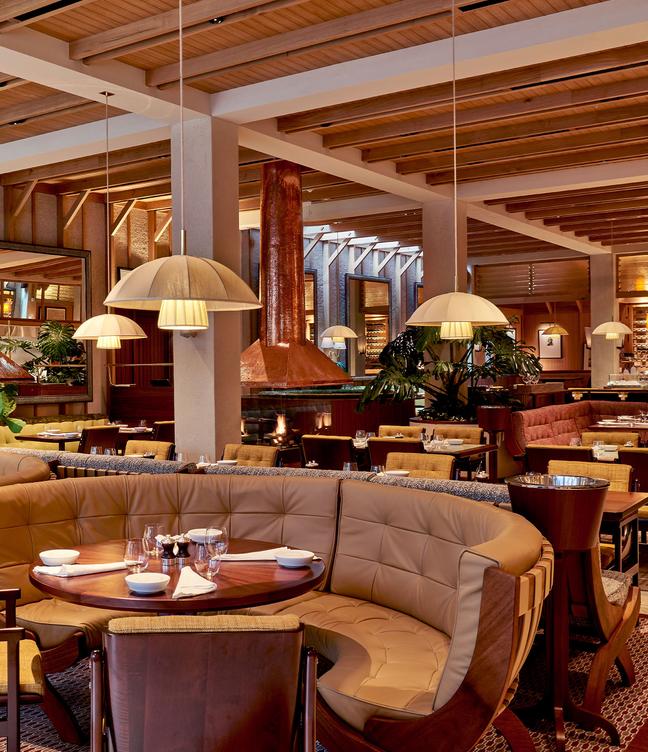
Dovetale, towards the back of the behemoth 1 Hotel Mayfair, a more sprightly stay than is normal on this side of Green Park, is easily one of the largest dining rooms in London today, a function-hall-size space that still lends each visitor a feel of cosy intimacy thanks to a few considered touches: spaced-outed booths, a gentle fire, and large-format plates – whole Dover sole with grapes, a bit of tarragon, and some cauliflower; healthy amounts of grain-fed Black Angus rib-eye, sauced with peppercorn, Bordelaise or chimichurri – that are destined to be shared* (*brawled over).
At his small clutch of restaurants, Tom Sellers has done a great job of solidifying himself as a chef of distinction, scooping up stars for spotlighting the greatest of the seasons’ hits, and generating viral dishes such as his snail bolognese, and Dovetale sticks to what all good cooks of his kind obsess over: flavours amplified not by obscure ultra-complexity, but by a dedication to considered ingredients and time-old methods (a reputable pâté en croûte, seemingly whisked from bedtime stories); dishes that sing with fire and apparent simplicity (T-bones and flat-irons and lamb racks); and listings that lean in the direction of the rustic lust of the countryside (the roasted Somerset Saxon chicken is an easy thing to love, made with Madeira cream, a few clippings of wild garlic, and a couple of morel caps). Just remember to leave room for the killer Knickerbocker-glory trolley at the end.
The Midland Grand Dining Room
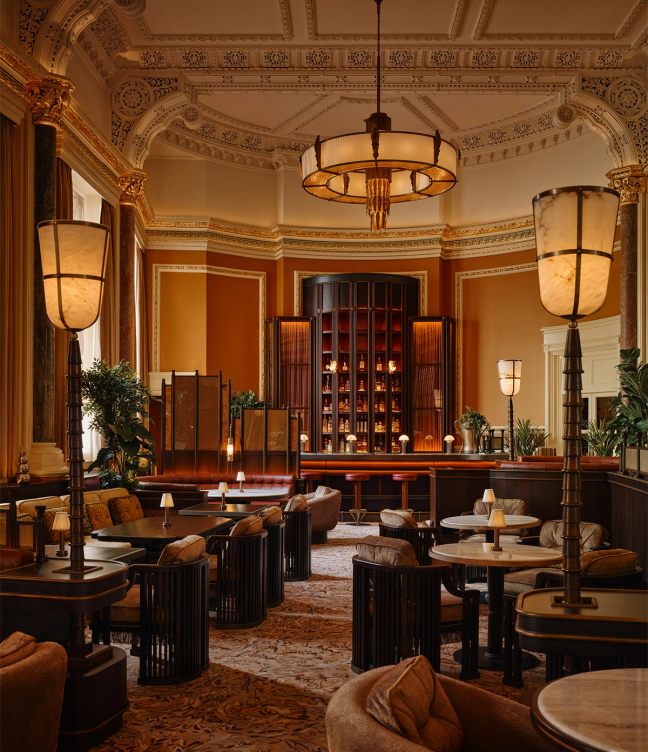
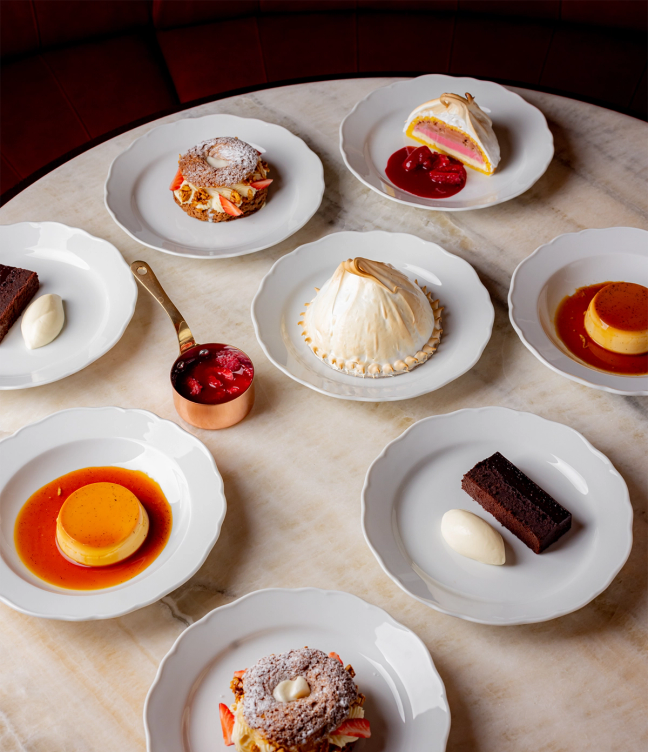
Patrick Powell’s style of cooking can, if you look at it a certain way, be best compared to a fine navy suit off the rail: evergreen, elegant, right for all occasions and people. He’s the chef who did 600 covers a day when Chiltern Firehouse’s star was highest; his cuisine at Allegra – a mix of the Gallic pantry, hints of his time working with Nuno Mendes, a menu that includes items such as barbecued mackerel anchored by a smoked-tomato broth, and a signature fried chicken that’ll likely bring to mind your last trip to Louisiana – is the reason why many brave the ride out to the eastern end of the Jubilee line; and it’s his fingerprints that are pressed all over the culinary direction within the vaulted neo-gothic atrium of Booking Office 1869.
The Midland Grand Dining Room, the latest feather in Powell’s bow, is perhaps his crowning glory, a seasonal French all-dayer that swoons to the spirit of Paris’s grand brasseries. The deep booths and the soft flooring are all there, of course, as are the plateaus of oysters with zips of pickled-seaweed mignonette; the parmesan fritters that flood the mouth with the taste of the sharp cheese, black garlic and shaved coppa; the cubes of charentais melon – layered with a bit of Bayonne ham and splashed with a little lime and olive oil – may remind you of the vibrant, exotic style of the El Bulli kitchen; and the copper Mauviel of whole roast chicken is the right call: thick, full of juice, and gently pounded with vin jaune, mustard leaf and wild mushrooms. The flights of wine, many from Loire and Alsace, help ease it all down, and, unless you have a Peloton class before your morning conference, you won’t even need to think twice about the Paris-Brest.
Sketch Gallery


Even with its two-decade run as the restaurant to the well groomed, Sketch Gallery still continues to feel like an art set destined for your camera roll, a vast cavern of never-ending rooms where pomaded hair, turtlenecks and Instagram collide with Yinka Shonibare’s framed quilts and carved wood masks, walls bathed in India Mahdavi’s strokes of gold and blonde, and bathroom pods that look as though they were part of the prop line-up for 2001. And, though the swathes of pink that made the place so coveted may have been scoured out, the surreal dream-sequence haze of it all – the absolute essence of the place – endures.
Pierre Gagnaire, who oversees the cuisine from afar, has a body of work to be admired, and his cooking is celebrated for jolting juxtapositions and wild upends and listings of ingredients that shouldn’t be seen next to each other on a menu, done in ways that lean far into the imaginary; there is a poached egg mixed around with Oscietra caviar, smoothed sour cream and smoked haddock; grilled scallops are moistened with clementine juice; and langoustines are nicely crusted to a tempura. The lamb navarin you’ll yearn for is situated towards the heavier end of the scale, arriving with a stack of onion rings – and it’ll ply you into a blissed-out haze when paired with a mega carafe of Monbazillac merlot. Does it matter if there are selfie flashes constantly going off around you? It does not. After a few hours at Sketch, all feels pretty good about the world.
The Ritz Restaurant
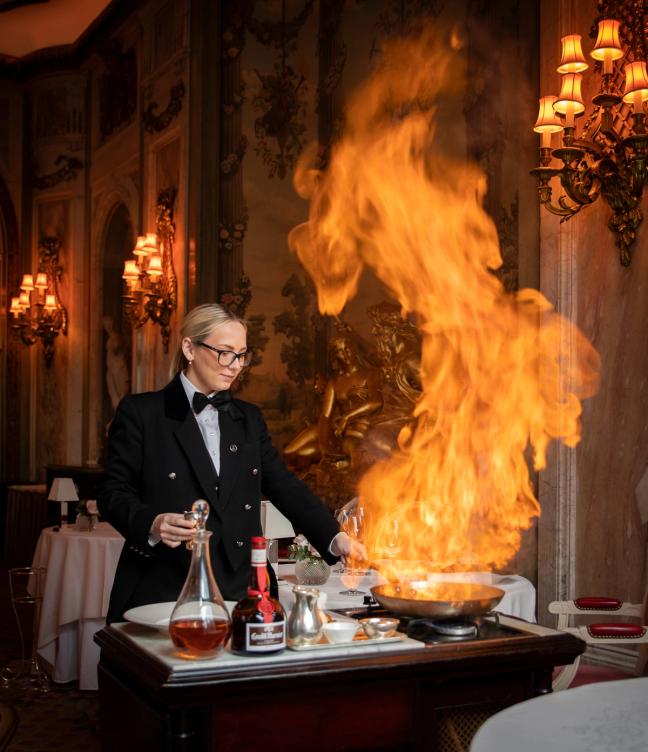
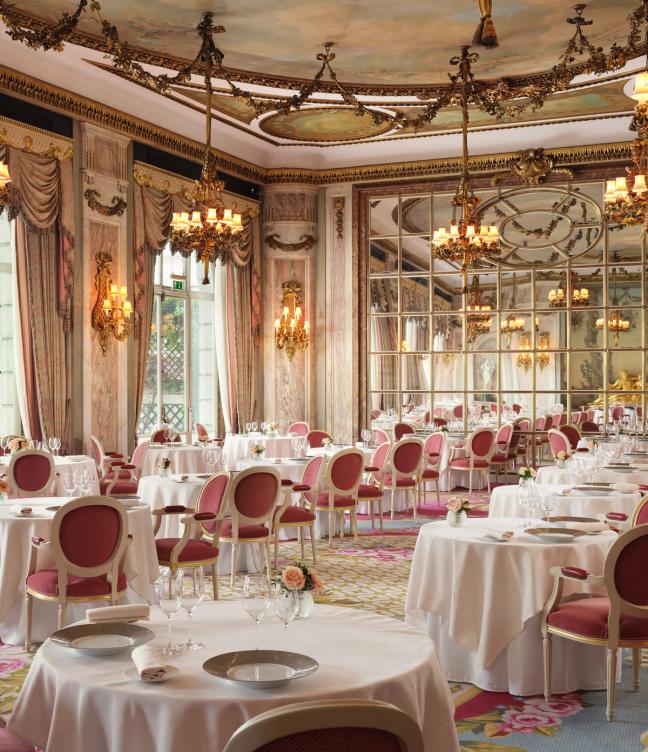
We all think we know what a great London restaurant is. It’s the fiery Shoreditch Thai where the chicken wings have Yelpers writing in longing sonnets. And if it’s not that, it’s the obscure wine bar south of the river, where the bottles are sourced from a third-generation producer in Lebanon and the pâté en croûte is a nod to the chef’s time in Lyon. Perhaps it’s the small-plates destination under a Bermondsey arch, where it’s highly recommended you get in line a good 30 minutes before the stoves are even turned on. Or it could be the corner lot slapping biangbiang noodles on a stainless-steel kitchen counter. And even in the face of its century-plus age and London’s taste for the new and obscure and the lo-fi, The Ritz Restaurant – a bastion of Louis XVI style, gilded with expensive chandeliers, elaborate carpeting, mirrored panelling and marble columns – prevails as one of the greatest reference points for celebratory eating. The ballotine of duck liver is moistened heavily with globules of sour cherry and pistachio. Egg custard is enriched with Parmesan and a generous hailing of truffle slices. Pigeon is carved with splendid ceremony at the table, its carcass cranked through a press and its bloody juices flowed from a spigot into a pan to become an enriched sauce that eventually pours over the bird’s breast. Crêpes Suzette are flambéed inches from your face. You end up collecting a whole cabinets-worth of glassware around you. Cheese is optional, but it’s pretty much the done thing. You just know that someone in the room is having the meal of their life.
At one point in the evening, you could even mistake the scene in front for a Jean-François de Troy painting, as the piano tinkles in the background, a sommelier in the distance assesses a Château Palmer under candlelight, the tight choreography of plates glides across the floor, and sizeable cheques are dropped on table after table until the room clears out at around midnight. Just don’t forget your jacket and tie.
Ekstedt at The Yard
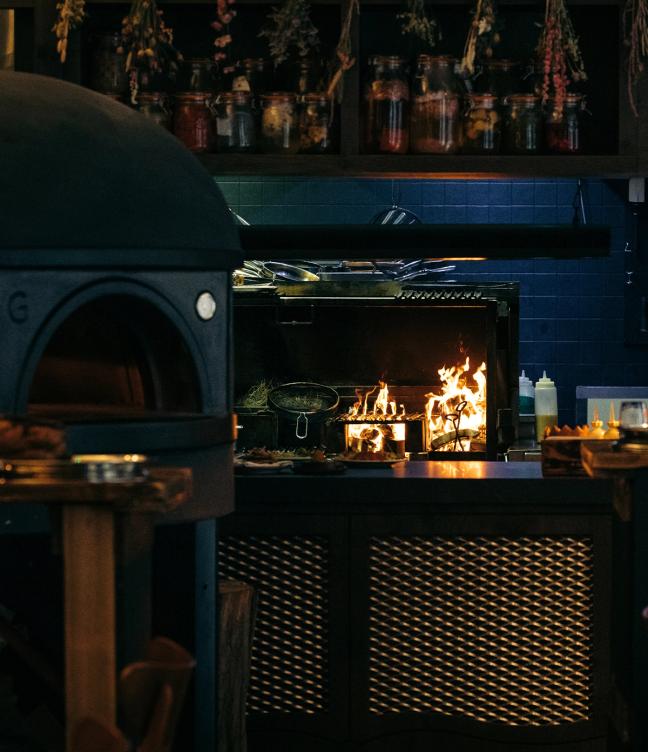
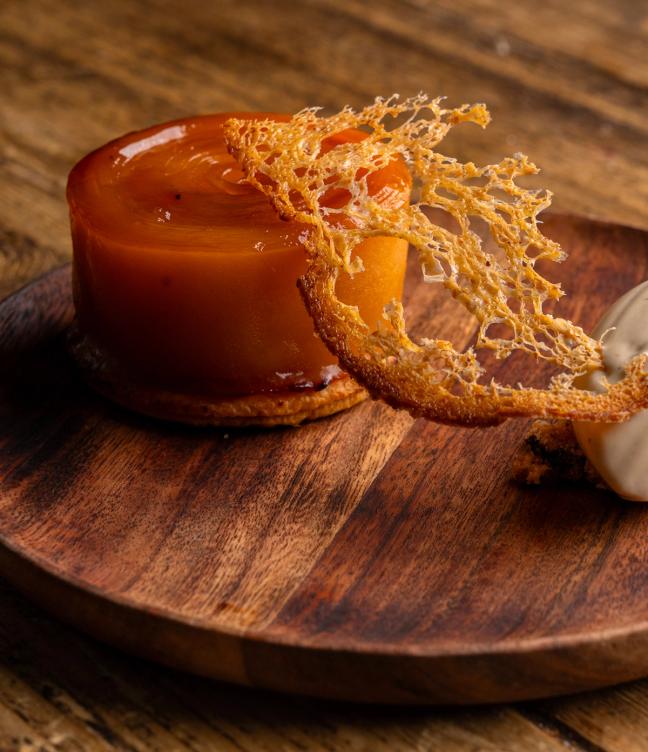
The great draw about Ekstedt at The Yard, the London outpost of chef Niklas Ekstedt’s Stockholm mothership, is its insistence to refrain from Nordic tropes: there are no large clusters of sheepskin-backed Wishbone chairs; no squeeze bottles of seabuckthorn burying each component; no cloudberry supplements. The main component here is the reliance on open-fire cooking, a primal, fundamental method that’s long been associated with the region and flavours each dish with charred heat.
Red mullet, whole, butterflied and grilled, is seasoned with bits of sea herbs, roasted fennel and its gravy. Wild duck – which comes with a smooth rub of fire-baked beetroot, an onion tart and a few trimmings of the season’s mushrooms – is smoked gently and slowly with juniper, ranking among Peking, pressed and confit as one of the best of its kind. And the apple tatin – peeled fruit spun into something resembling a squat roll of carpet, cooked in the wooden oven and levelled out with a quenelle of sourdough ice cream – when paired with the restaurant’s easygoing wines procured from volcanic islands will, with little doubt, fortify your appreciation for the time-old tastes of smoke and fermentation.
Temper Soho
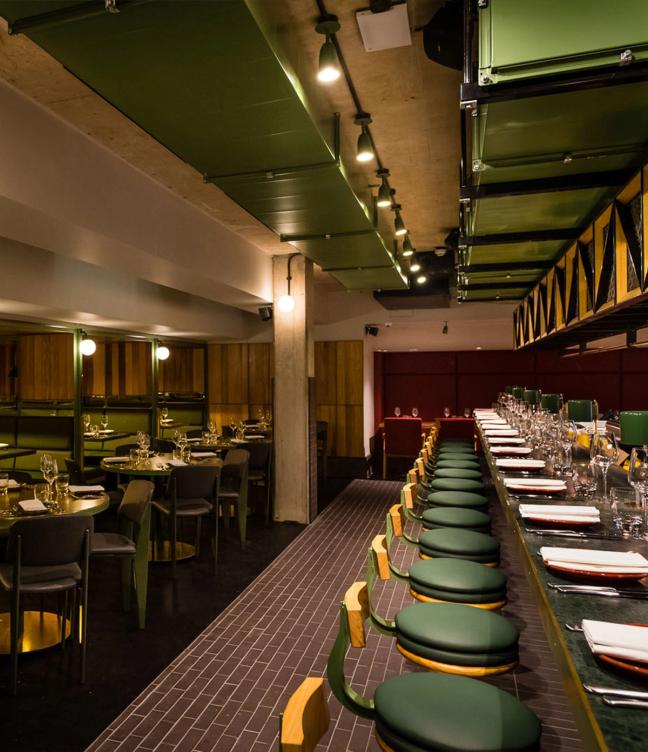
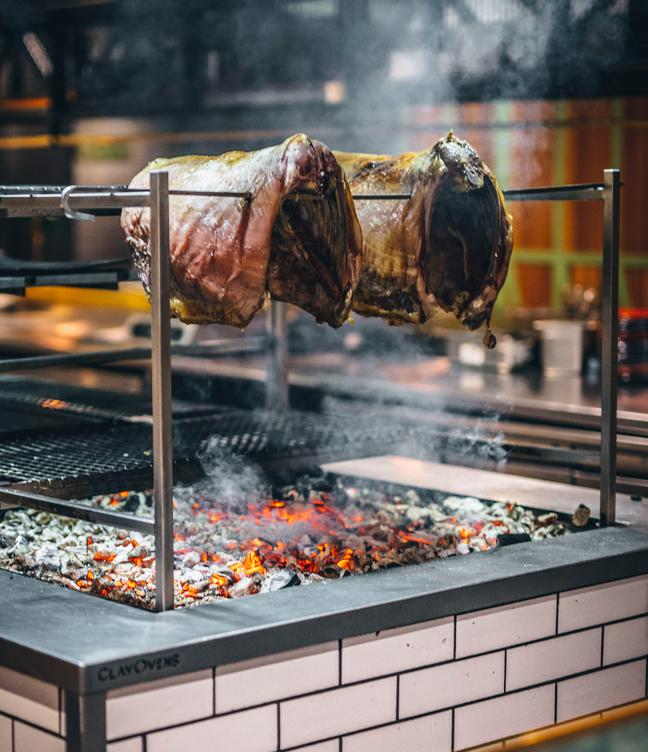
In a time of conscious, substitute dining, Temper is one of those restaurants that dials you back into the glories of great meat. Whole chickens and smooth racks of ribs hang from S-hooks in the central kitchen. Flavour is imparted from smoke emanating from the fire pit. Thick cuts are brought in from English farms, aged in-house, then butchered by cooks. Some pieces – steaks both on and off the bone among them – are left fairly unadorned, others are served in corn tortillas (the drunken goat’s cheese option comes with a shot of tequila; the burnt ends can take your mind to Texas). Anything wrapped in a paratha pretty much splits the difference between a bing and a flatbread. And you’re gonna want to book a seat at the counter to soak up all the heat. Just don’t sleep on the desserts – the deep-dish cookie is a great way to nix the meat sweats.
Spring
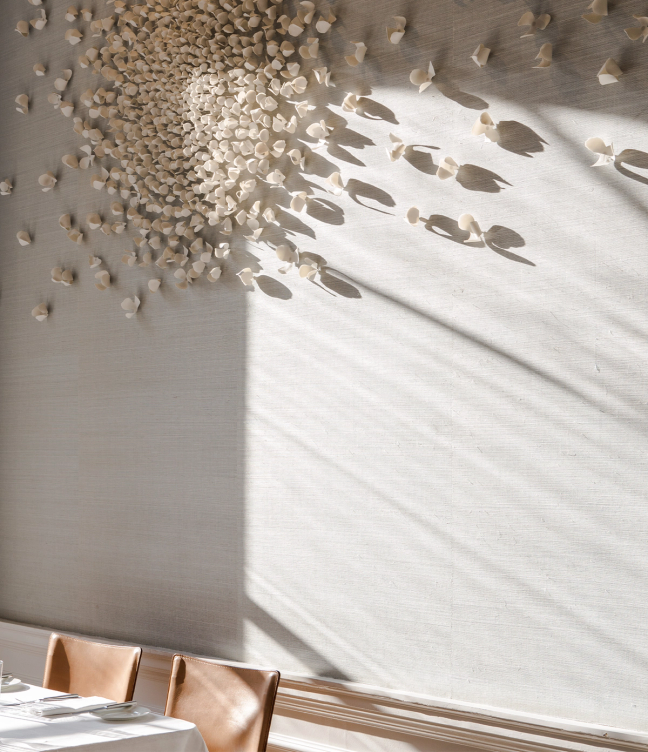
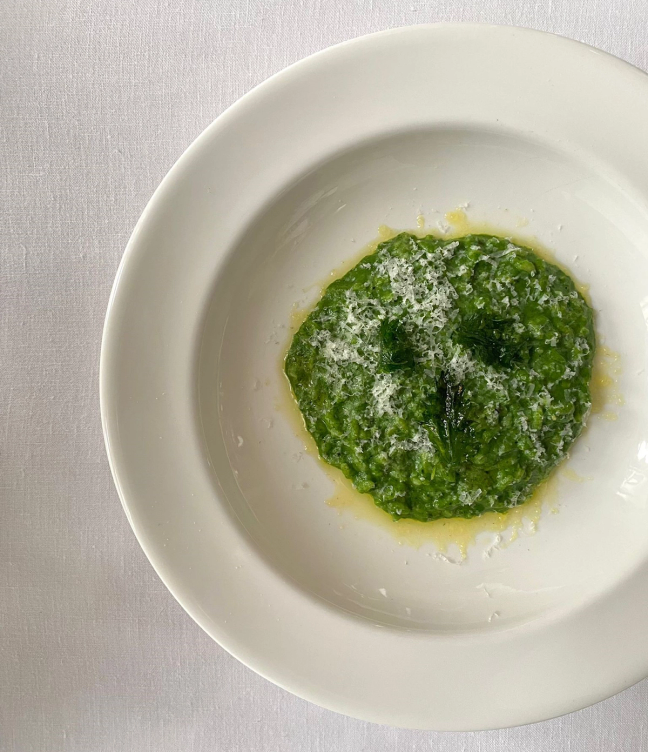
Lounging around Spring on an idle weekend morning, picking away at the sweet flesh of mussels plated with white asparagus, mussel-flavoured butter, wild garlic and rye croutons, and spooning through a vibrant-green dish of nettle risotto showered with shavings of wonderful cheese – there’s perhaps no greater way to enjoy the gentler side of London. Skye Gyngell was part of the modern vanguard of cooks to jump-start the idea of working with the evanescence of the seasons, an ethos famously showcased during her long run at Petersham Nurseries, where the flow of plates were joyful, sunny and plugged into the essence of which ingredients were peak that day. And for her current work, at Spring, a graceful interior overrunning a wing of Somerset House and gilded with marble, pillars and fantastic natural light, she continues to do everything a great chef of her kind does, dealing in glorious produce – not just trout, lobster and beef, but also goat’s curd, winter tomatoes and soft herbs – care and the pleasure of the eater.
So, it’s likely you’ll want the small mound of slow-cooked lamb shoulder that slips right off its bone, garnished with tomato, and lovage salsa verde; and the Cornish red chicken is pushed towards the French countryside with three of four morels, a schmear of puréed potatoes and a little glug of vin jaune. The pared-down grapefruit jelly with set cream and a splash of Bèrto liqueur – from its vivid flashes of pink to its splendid, time-old taste of fruit and dairy – is perfect in every way.
Saltine
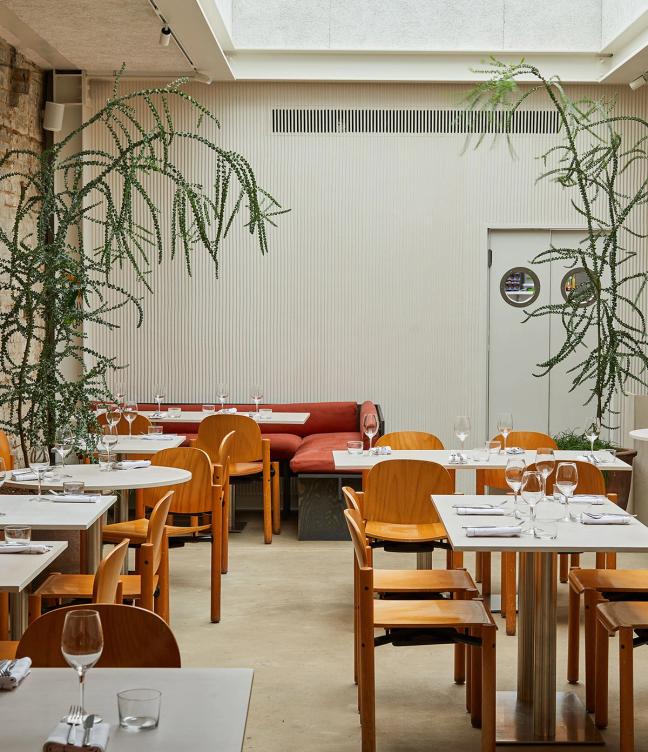
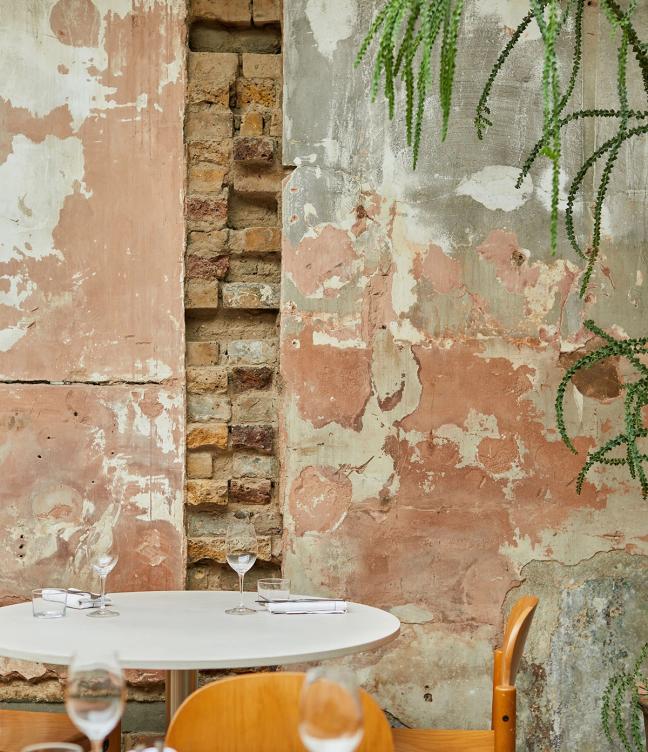
A large part of the appeal at Saltine, the Highbury restaurant that expresses the very best of the British seasons, is the interplay of crumbling plaster and brick with the stroke of light that flies through the glass ceiling – an experience that may evoke the feeling of being in a Mediterranean conservatory, the studio of an architect firm, or a contemporary exhibition space on the English coast – and it could well be one of the greater neighbourhood-dining fixtures in London.
There are plump, chewy mussels with tomatoes and dill that you can refuel on after hitting the credit card hard in nearby Islington, and, if you can, you’ve got to request the slice of toast crowned with a handful of girolles and a layer of lardo that falls apart as easily as a teenage marriage. Other small plates – beef tartare, potato cake and radish, say, or asparagus with sauce gribiche – are great for quick lunch stopovers. There are also larger plates, such as the braised hogget with courgettes and mint, for the heavy-meat people.
It’s probably at this point where we should mention that you’d be fairly negligent if you weren’t there to experience a few spoonfuls of the sticky-toffee apple cake – a dessert that’s helped create the restaurant’s popularity, and one that will feel like a steal at £10.
Dinner by Heston
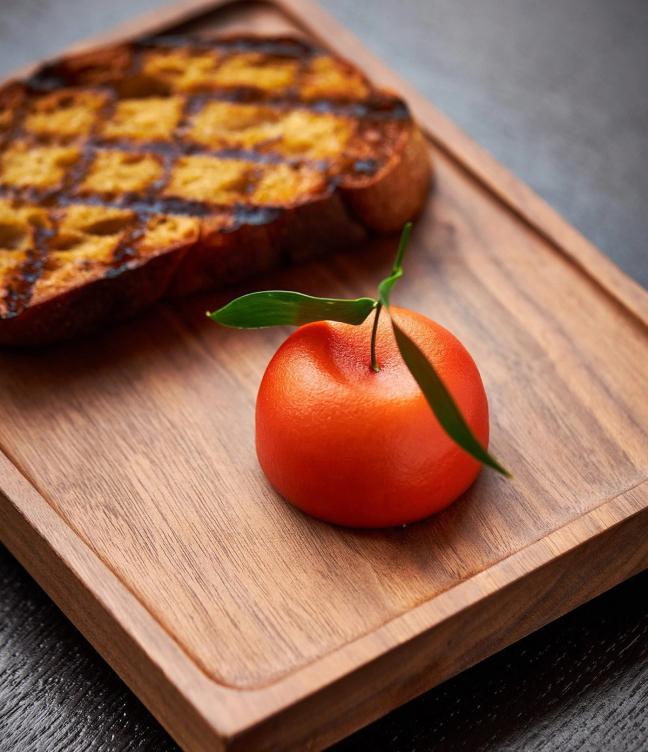
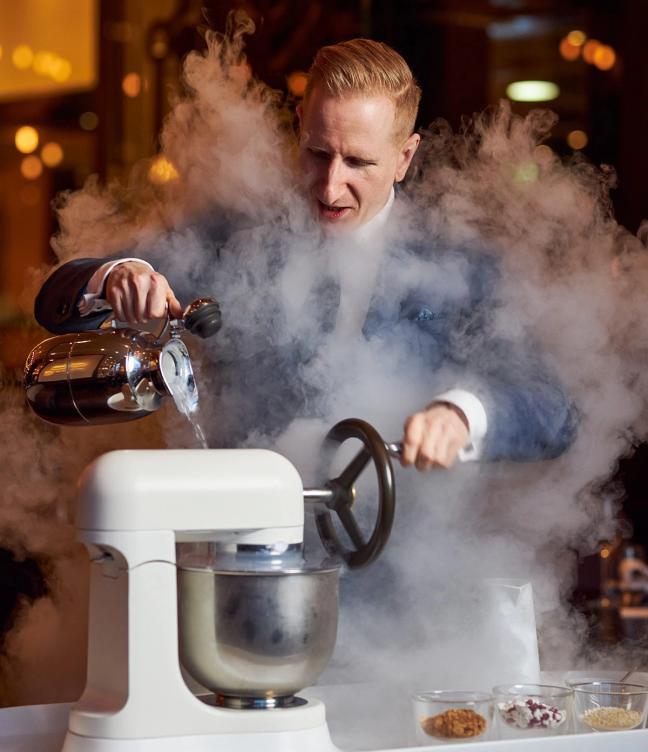
You know the brioche that blossoms from a cast-iron pot and is ordered by nearly all the covers at Dinner by Heston? That’s the Tipsy Cake, the restaurant’s trademark dessert, a blooming, shapely bun lacerated five directions, heavily moistened with Sauternes, and whose accompanying jagged slice of pineapple has been spit-roasted in front of the kitchen’s open-fire oven for the span of an afternoon and is severed into stubby, appendage-looking batons moments before it’s delivered to you. Does the dish’s 19th-century backstory truly flavour the moment? Perhaps; the taste is divine.
Blumenthal’s playbook here is directed by recipes fashioned centuries prior and contorted through a contemporary lens. The dish labelled on the menu as Rice and Flesh – a risotto-like riff enlivened with slices of almond, veal sweetbreads and smoked eel, fragranced with saffron, and scattered with snips of chicken feet – has lineage from Richard II’s court. The black-foot pork chop – the loin taken from the Iberian pig, judged by many to be the finest breed of its kind, sliced fine, and fanned out like a spread of cards on a Las Vegas table – is a nod to a moment in time when Marie-Antoine Carême, the 19th-century architect of French cuisine, took residency in London. At the end of the meal, the Victorian-inspired ice-cream trolley will be wheeled out and cranked by hand tableside until a thick smoke of liquid-nitrogen erupts from the new-age machine and envelops your server who will then stud it with popping candy, chocolate, walnuts, and raspberries that have been freeze-dried. At this point, it’s either you or the dessert that gets crushed. Steady yourself and move the belt down two notches; you’ll need to dig very deep.
Hawksmoor Knightsbridge
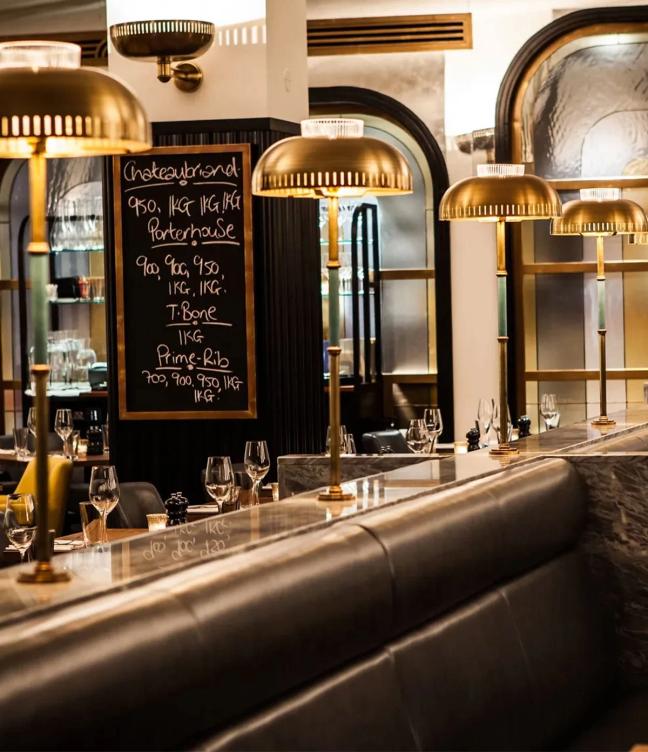

One of London’s great culinary legacies is Hawksmoor, an always-reliable home to the glories of steak – T-bones so immense that they could keep open the lobby doors of a five-star hotel, the robust flavours of rump, the primal lust you’ll feel for the standard of quality set by the chateaubriands (you’ve just got to plump for the chateaubriands), all heavily crusted with fistfuls of Maldon salt and handled, flamed and rested just right.
But, if you read beyond its signature calling, it’s also home to cooking done well: roasted scallops flavoured with slips of garlic and splashes of white port; the belly ribs of a Gloucestershire pig, patterned with fat and lifted by the zip of vinegar slaw; triple-cooked chips and beef-dripping fries; and miniature Staub pots heavy with finessed creamed spinach. And, the lychee martini is a superb way to end any evening.
Kol Mezcaleria
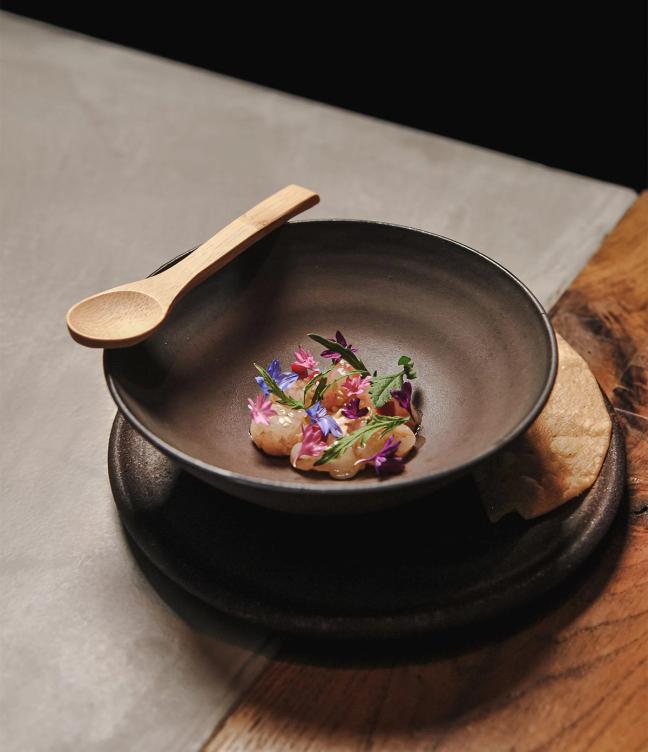
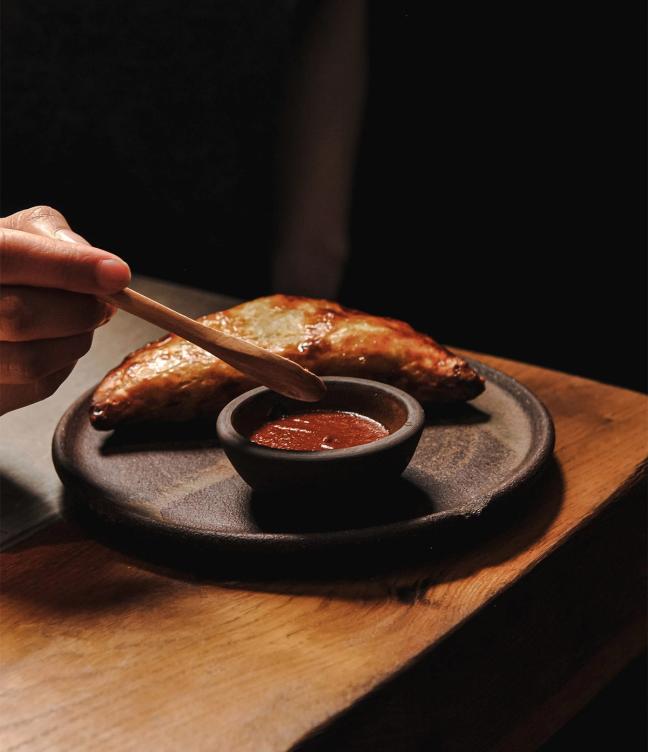
Sampling the mezcal selection at Kol, chef Santiago Lastra’s apparently seamless integration of Mexican fare with the British larder, is a lethal, yet not entirely regrettable, way to end a meal. A quick sip of La Sandia, the pichomel-focused drink distilled twice and fermented for fifteen days in a plastic vat, floods the throat with heat and funk and sparks of fruit, before waxing the deeper inches of your chest with what feels like a Jackson Pollock – all energy, colour and vibrancy. It is a pleasurable, life-affirming thwack to the system before you pour yourself into the taxi home.
You have, no doubt, tasted Mexican in London before, or at least attempts of recreating the cuisine whose roots are embedded in millenias-old tradition – and, what is on offer is often a dud when compared to the options that Angelinos or Chicagoans consider a birthright. If you were pushed, Sonora, whose divine, lovingly blistered flour tortillas draw the London Fields crowd, and La Chingada, popular among the Mexican community south of the river, are worthy of your time. Kol, however, whose tostada is slicked with a fistful of enoki mushrooms and cranked up with habanero and clippings of fermented gooseberry, and whose quesadilla is lubricated with springy Kentish Oaxaca cheese that can stretch the length of a forearm, could be considered the finest of them all.
Lisboeta
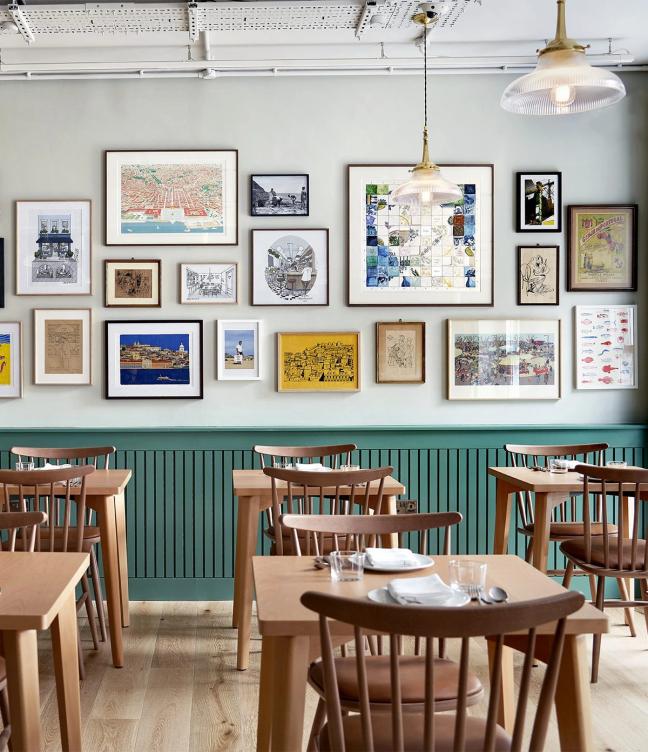
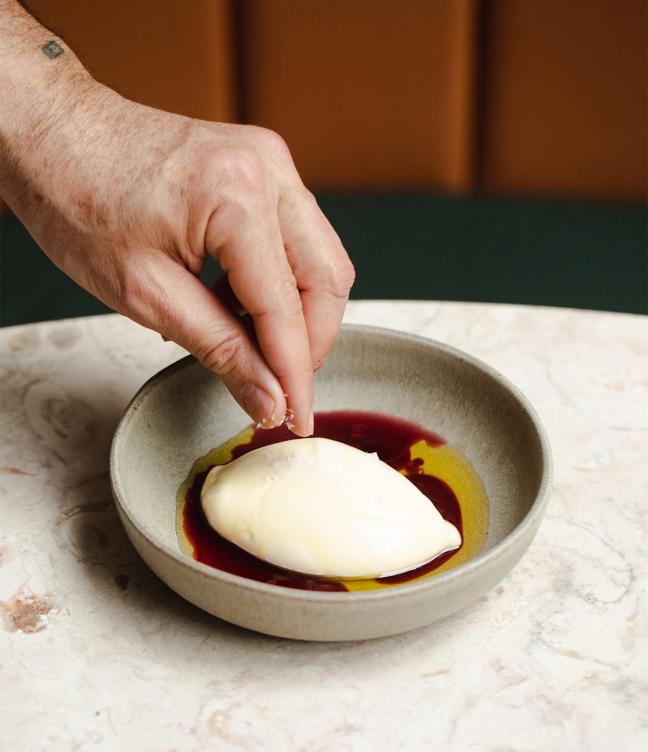
Lisboeta is a colossal space, generous in wood and glow, signalled only by its muted ink-blue facade that is jimmied among Charlotte Street’s officeworker boozers, chain eateries, greasy pizza dives, and Michelin-approved tasting menus. The curved marble bar stretches for what seems like a shuffleboard-standard length, and the grilling station is piled absurdly high with spears of asparagus, palettes-worth of deep-sea scarlet prawns, and racks of brick-thick hunks of drying beef. Depending on the day, you are led upstairs, towards the food-obsessed couples and groups of media workers, and you are seated among the extremely loud, explosive energy of it all, where the high decibel levels are probably only comparable to the chaos of Black Axe Mangal, chef Lee Tiernan’s anarchic Highbury eaterie.
Lisboeta’s chef, Nuno Mendes, has, one might say, cemented auteur status in London, having previously overseen winners with the brasserie-style Chiltern Firehouse and private-diner Mãos, and his most recent project certainly helps cement the argument. The glory of Portuguese fare, I am told, is not in its spice-grilled chicken or the pastéis de natas, the way in which bulgogi and bibimbap are not truly symbolic of the seriousness of the Korean kitchen – and, part of Mendes’s success is having not leant into the clichés. At Lisboeta, you will be tearing up bits of O Simões Azeitāo cheese – a viscous, soft sheep’s cheese from Portugal’s western coast, which has a punchiness you might find strikingly pleasurable – eating grilled acorn-fed black pork whose taste is darkened by a fermented red-pepper paste, a dish you’d hope to be confronted with whenever you step into a Lisbon restaurant, and you are going to want to try the mushroom açorda – thick cuttings of wild mushrooms congealed by a flowing egg yolk – at least once.
A trip here also shouldn’t go without the promise of the abade de priscos – a gleaming, wobbly orb of egg yolk and pork-fat custard the size of a desktop mouse, good enough to eat even without the splendid addition of port-wine caramel, a glorious dish that appears more a contemporary sculpture than food.
Want more restaurant content? We go inside the mind of Albert Adrià, the world's most important chef...

Become a Gentleman’s Journal Member?
Like the Gentleman’s Journal? Why not join the Clubhouse, a special kind of private club where members receive offers and experiences from hand-picked, premium brands. You will also receive invites to exclusive events, the quarterly print magazine delivered directly to your door and your own membership card.
